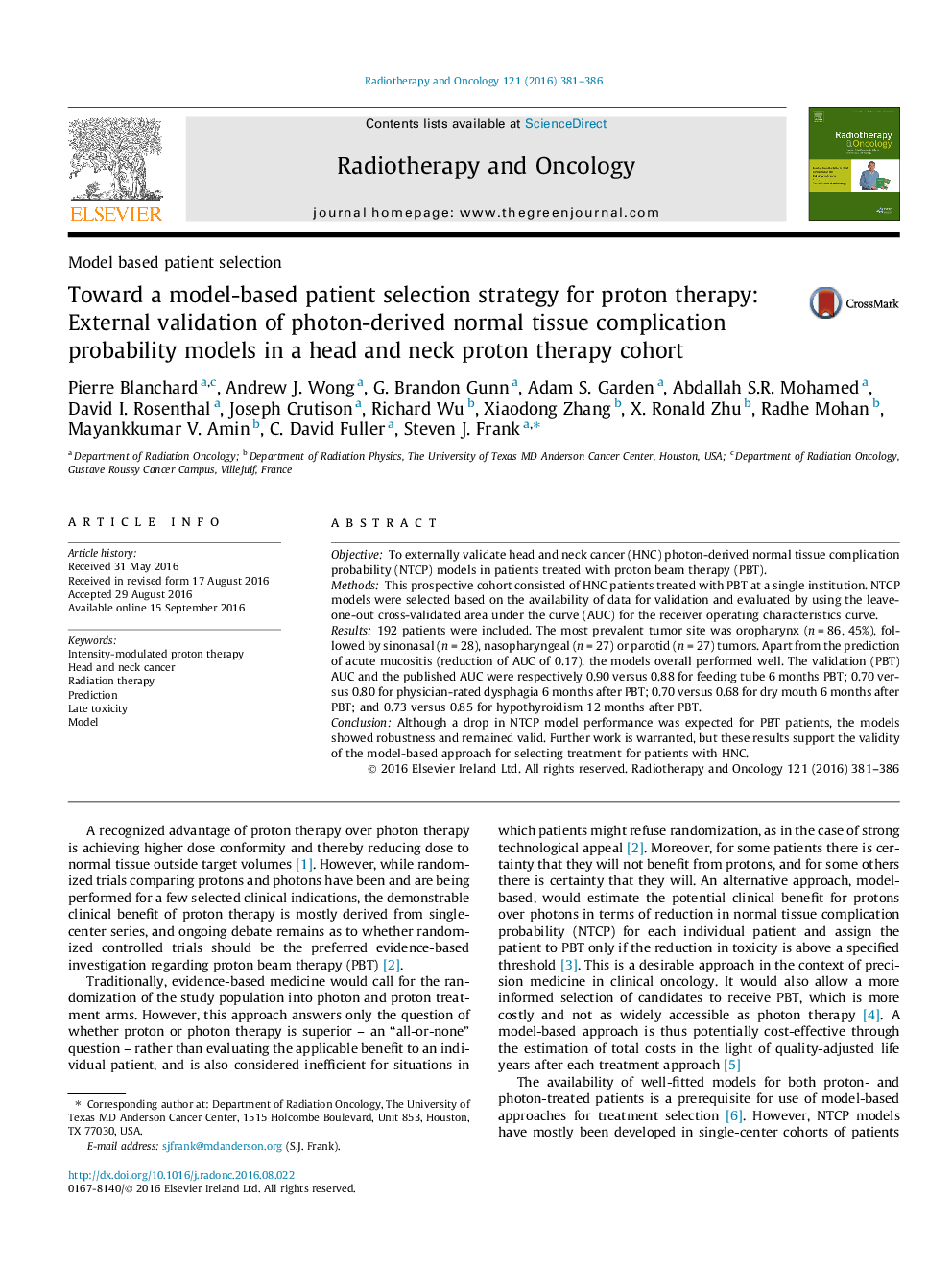| Article ID | Journal | Published Year | Pages | File Type |
|---|---|---|---|---|
| 5529763 | Radiotherapy and Oncology | 2016 | 6 Pages |
ObjectiveTo externally validate head and neck cancer (HNC) photon-derived normal tissue complication probability (NTCP) models in patients treated with proton beam therapy (PBT).MethodsThis prospective cohort consisted of HNC patients treated with PBT at a single institution. NTCP models were selected based on the availability of data for validation and evaluated by using the leave-one-out cross-validated area under the curve (AUC) for the receiver operating characteristics curve.Results192 patients were included. The most prevalent tumor site was oropharynx (n = 86, 45%), followed by sinonasal (n = 28), nasopharyngeal (n = 27) or parotid (n = 27) tumors. Apart from the prediction of acute mucositis (reduction of AUC of 0.17), the models overall performed well. The validation (PBT) AUC and the published AUC were respectively 0.90 versus 0.88 for feeding tube 6 months PBT; 0.70 versus 0.80 for physician-rated dysphagia 6 months after PBT; 0.70 versus 0.68 for dry mouth 6 months after PBT; and 0.73 versus 0.85 for hypothyroidism 12 months after PBT.ConclusionAlthough a drop in NTCP model performance was expected for PBT patients, the models showed robustness and remained valid. Further work is warranted, but these results support the validity of the model-based approach for selecting treatment for patients with HNC.
